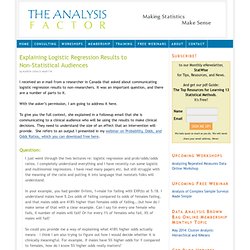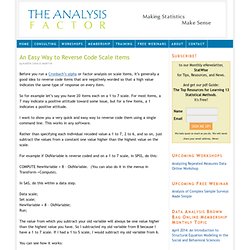

Log-probability.pdf. Y520 - Unit 3: Theory and Variables. IntroductionLecture slidesInstructor notesReadingsLearning activitiesWeb resources Introduction Theory and Variables This unit focuses on theory and variables.

Because researchers usually speak of "variables" and "designs" in the same sentence, this unit also conatains a very brief overview of research designs. This unit contains three topics: Theory In A Midsummer's Night Dream Shakespeare wrote that one goal of poets was "to give to airy nothingness a local habitation and a name. " Theory consists of generalized, abstracted terms that name an interrelated set of ideas (the "airy nothingness") and also describes the way in which those ideas are connected to corporality (giving a "local habitation and a name"). Mullins (1971) offers a similar though less poetic definition: "A theory uses concepts and variables . . . to span the gap between what we know as ideas and what we perceive as experience" (p. 7). All of us carry around certain meanings associated with each of these words. References. RAW. NVivo Training, Consultancy and Support.
NodeXL: Social Network Analysis for Scholars. [This is a guest post by Lisa Rhody, who works for the Roy Rosenzweig Center for History and New Media at George Mason University as the project manager for WebWise 2013.

She is currently working on a project called Revising Ekphrasis, which uses advanced computational tools to explore connections between 4,500 English-language poems. You can find her online at LisaRhody.com and follow her on Twitter at @lmrhody.] From early posts about scholarly uses of social media to more recent entries on its usefulness for improving student engagement, there seems to be a general consensus among ProfHacker writers that the use of social media promotes the widening of scholarly networks. Even though social network analysis as a methodology has been around since the 1950s, interactions within computer-mediated communities (CMCs) are more easily imported, calculated, and analyzed because they are born-digital.
Explaining Logistic Regression Results to Non-Statistical Audiences. I received an e-mail from a researcher in Canada that asked about communicating logistic regression results to non-researchers.

It was an important question, and there are a number of parts to it. With the asker’s permission, I am going to address it here. To give you the full context, she explained in a followup email that she is communicating to a clinical audience who will be using the results to make clinical decisions. They need to understand the size of an effect that an intervention will provide. She refers to an output I presented in my webinar on Probability, Odds, and Odds Ratios, which you can download free here. Question: I just went through the two lectures re: logistic regression and prob/odds/odds ratios. So could you provide me a way of explaining what 418% higher odds actually means – I think I am also trying to figure out how I would decide whether it is clinically meaningful. Answer: First of all, you’re absolutely correct in the way you’re interpreting the odds ratio.
Resources to help you learn and use SPSS. Stat Computing > SPSS Help the Stat Consulting Group by powered by. An Easy Way to Reverse Code Scale items. Before you run a Cronbach’s alpha or factor analysis on scale items, it’s generally a good idea to reverse code items that are negatively worded so that a high value indicates the same type of response on every item.

So for example let’s say you have 20 items each on a 1 to 7 scale. For most items, a 7 may indicate a positive attitude toward some issue, but for a few items, a 1 indicates a positive attitude. I want to show you a very quick and easy way to reverse code them using a single command line. This works in any software. Rather than specifying each individual recoded value–a 1 to 7, 2 to 6, and so on, just subtract the values from a constant one value higher than the highest value on the scale. For example if OldVariable is reverse coded and on a 1 to 7 scale, in SPSS, do this: COMPUTE NewVariable = 8 – OldVariable. In SAS, do this within a data step. Interviewing Skills for Qualitative Research. When d oing research, sometimes it is easy to forget about the actual research project as you jump through all the hoops to get your IRB approved, find your subjects, honing in on your questions, etc.

For those of us doing more qualitative work, there can be another huge layer of work involved interviewing subjects will be a part of your study. I wanted to look closely at some other factors that can help prepare interviewers beyond the simple adage of “don’t ask close ended questions!” As I approach my first “real” project, I’m making mental notes of things that I found helpful along the way.
Be comfortable with your questions. Know your strengths and weaknesses. The environment counts! Be an engaged listener. Don’t interrupt unless you must. No double-barreled questions! What other tips to you have for new interviewers? [Image courtesy of Flickr user smiling_da_vinci with Creative Commons License]